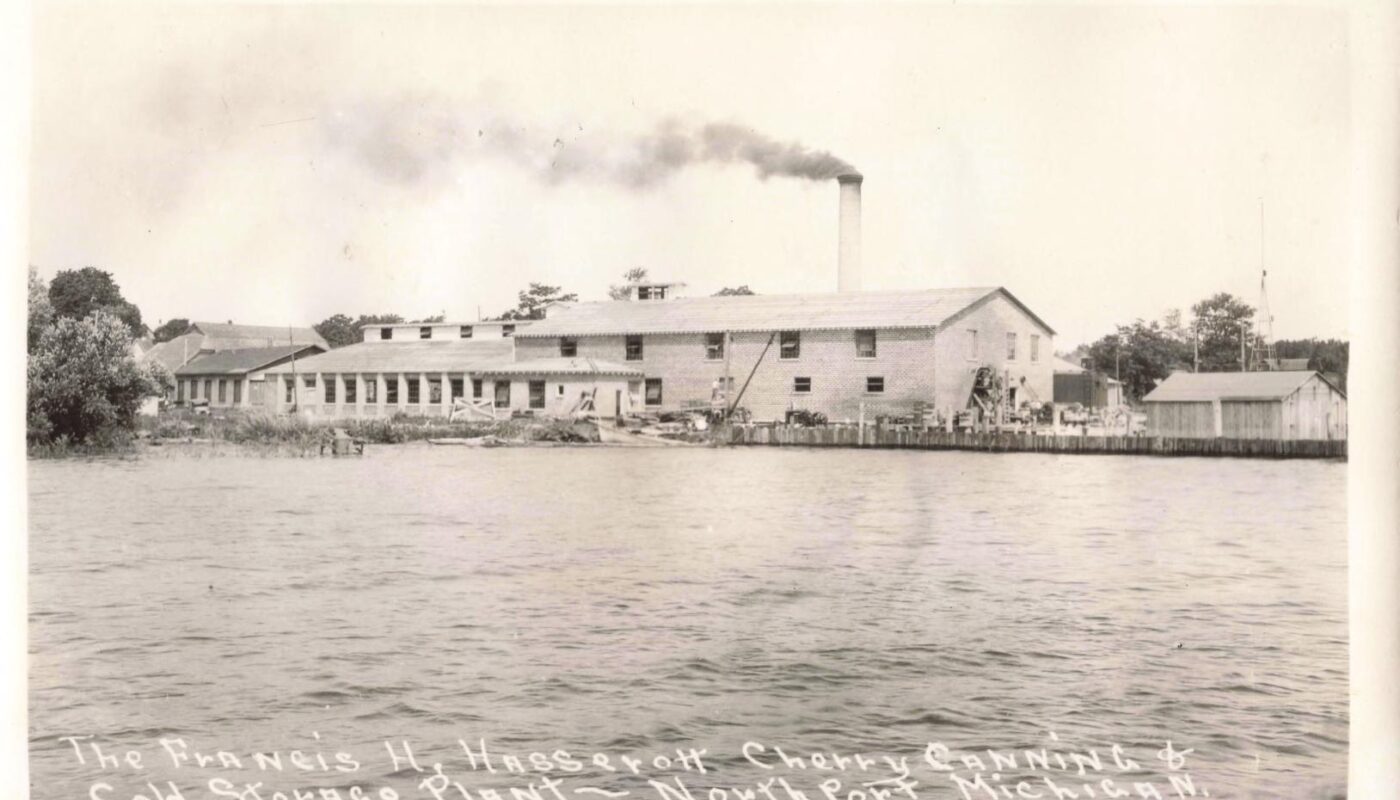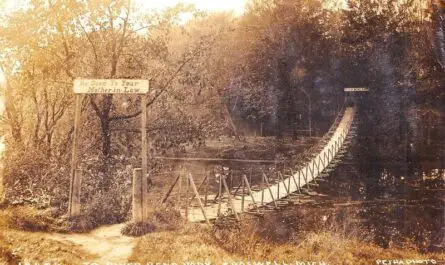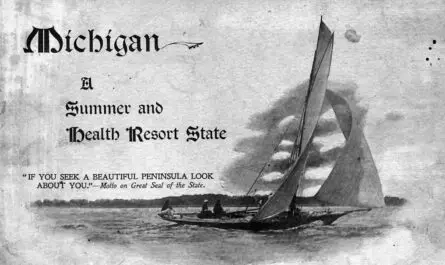We take a closer look at Northport Michigan history through a series of rare real photo postcards, now archived at the University of Michigan. These early 20th-century images reveal the town’s canneries, fishing docks, trains, and daily life along Grand Traverse Bay. Each postcard provides a visual record of how Northport built its reputation as a hardworking Great Lakes port. This is part of our Michigan History series on Michigan4you.
A Beautiful Town at the End of the Road

Northport, Michigan, sits at the tip of the Leelanau Peninsula, with Grand Traverse Bay at its front door. Around 1900, this village was more than a scenic stop. It was a working town with a busy harbor, steady rail traffic, and seasonal surges tied to fruit and fish. In one photo, we see the town from above. The schoolhouse is clearly visible. A church spire marks the center of town. Trees line the roads. At a glance, it looks quiet. But in summer, this place moved with urgency.
Video – Northport Michigan History in Pictures: Fishing, Freight, and Fruit
A Main Street With Momentum

A second image takes us down the sidewalk of Northport’s main business district. The Hotel Northern stands on the left, its porch full of rockers. Just beyond, storefronts display signs above awnings. Horse-drawn wagons and early automobiles share the same dirt road. It’s a town in transition—modernizing, but not yet letting go of older ways. Commerce was steady. Summer travelers and local trade kept it going.
Cherry Canning and Cold Storage
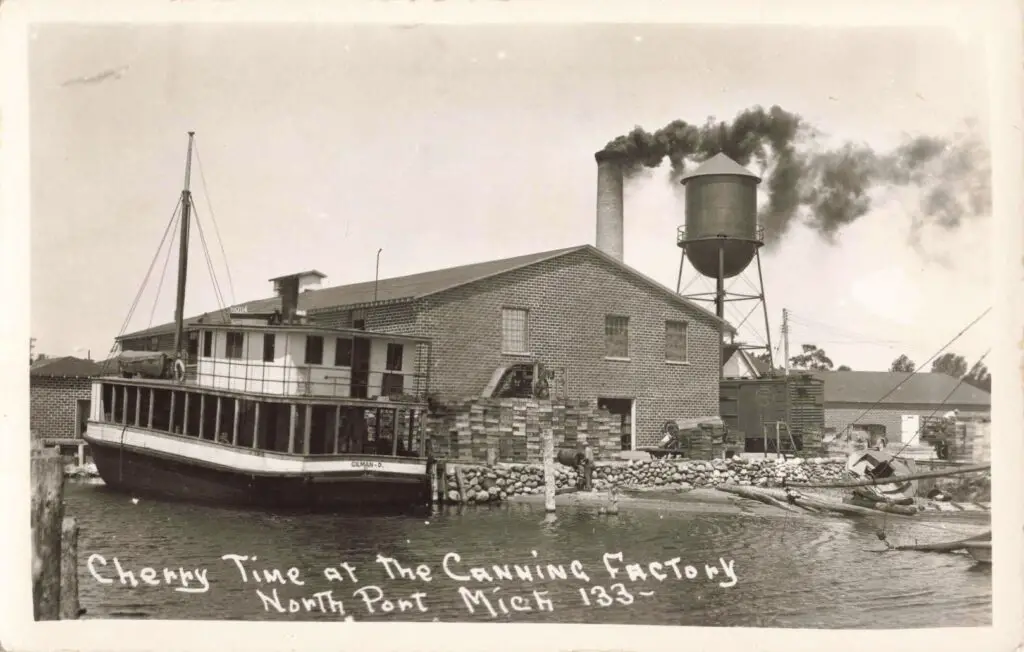
Cherry season meant overtime at the docks and canning plants. In one postcard, crates are stacked high outside a brick warehouse. A steamship, the Gilman D, sits docked, ready to carry the harvest. Black smoke pours from the cannery stack. The scene is full of motion—workers moving, crates shifting, vessels loading.
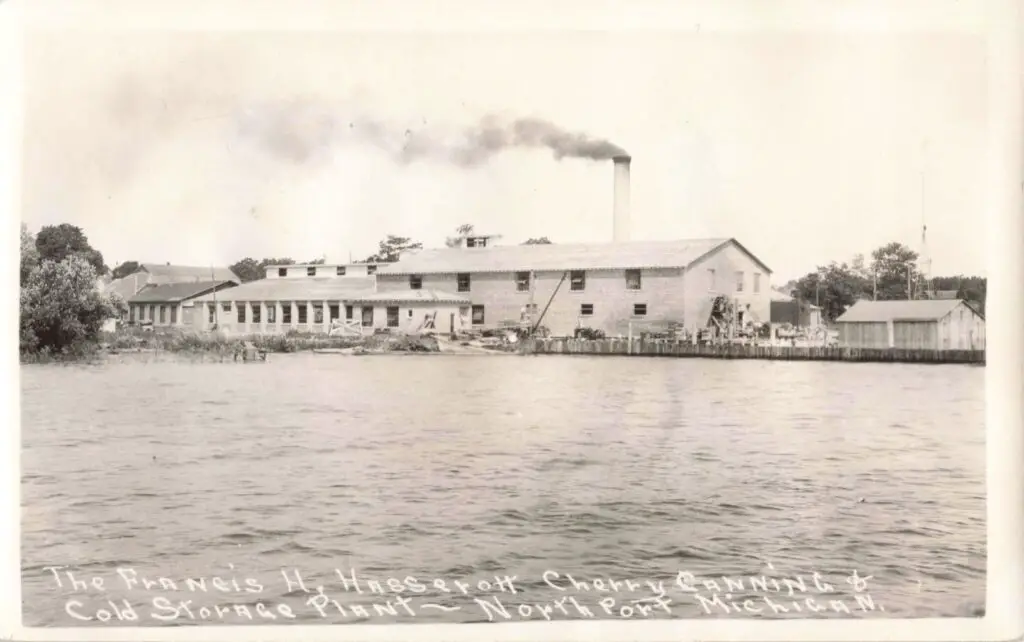
The Francis H. Hassertoh Cold Storage Plant also shows up in another view. Its long, low frame held the region’s bounty in refrigeration, preserving it for rail or lake shipment. These plants were critical to the local economy.
The Docks That Fed Families

Fishing sustained Northport for decades. An image of the fishermen’s dock shows rows of wooden drying racks, thick with hanging nets. Children sit along the boardwalk, barrels of fish nearby. Behind them, shanties lean toward the water. These weren’t just structures—they were lifelines. The Great Lakes fish trade moved through ports like this, where men pulled nets and sorted catch by hand.
Stone Depots and Rail Lines
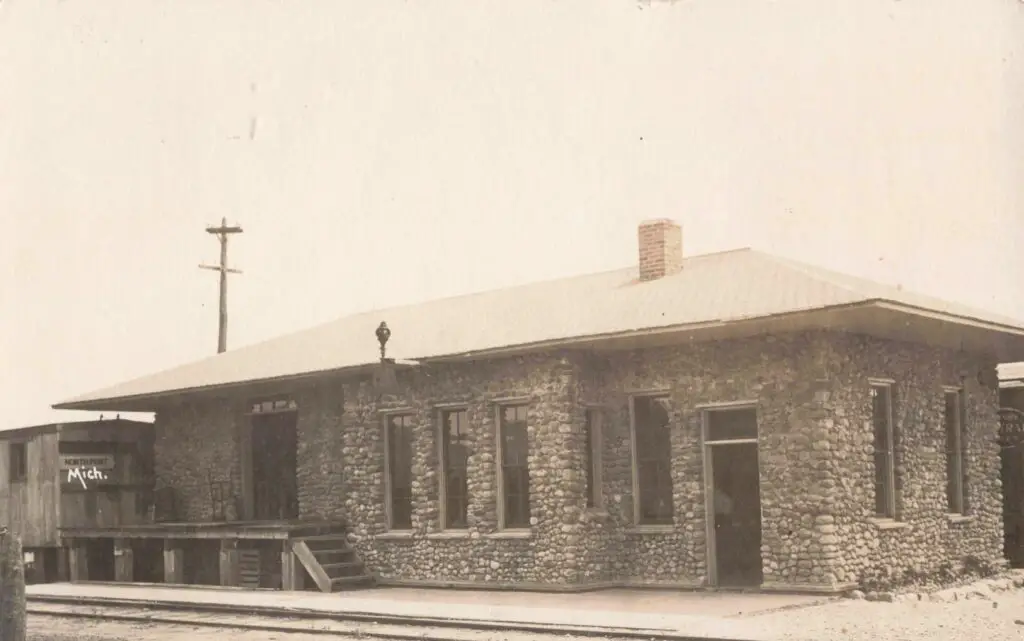
Rail reached into the peninsula and linked Northport with outside markets. One striking photo shows the stone train depot—sturdy, windowed, and close to the tracks. This station moved everything: people, fruit, mail, and fish. A small sign reads “Northport, Mich.” in white paint. Though modest in size, the depot was vital for connection to larger towns and distant buyers.
Cedar Lodge and Northport Point
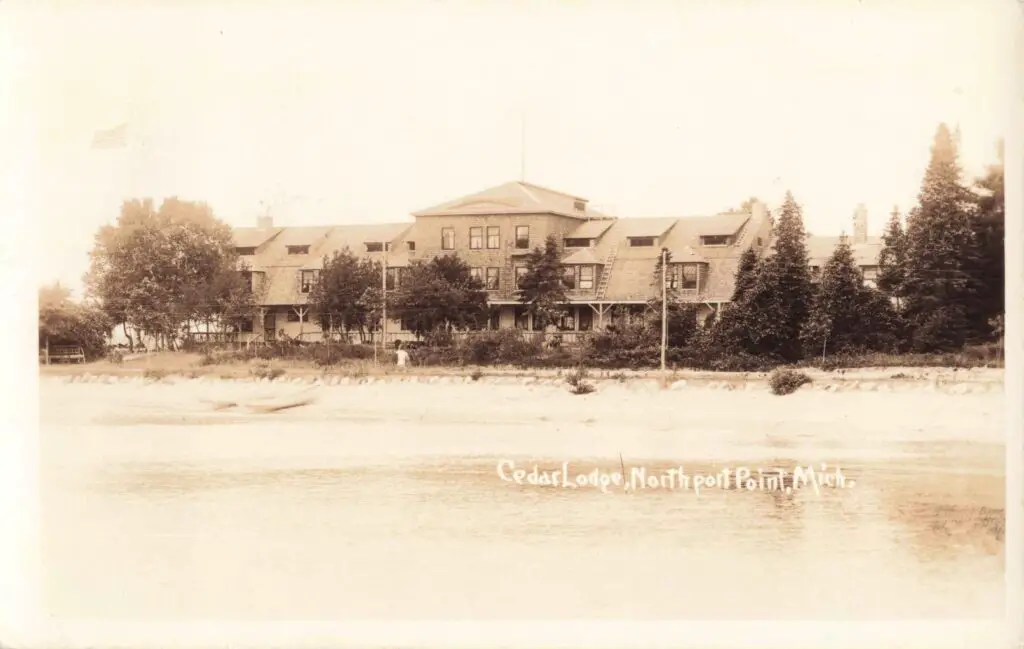
Further out sits Northport Point, a summer colony for wealthy visitors. Cedar Lodge offered upscale accommodations along the water. A wide, multi-gabled structure, it faced the bay with porch rails and flagpoles flying.
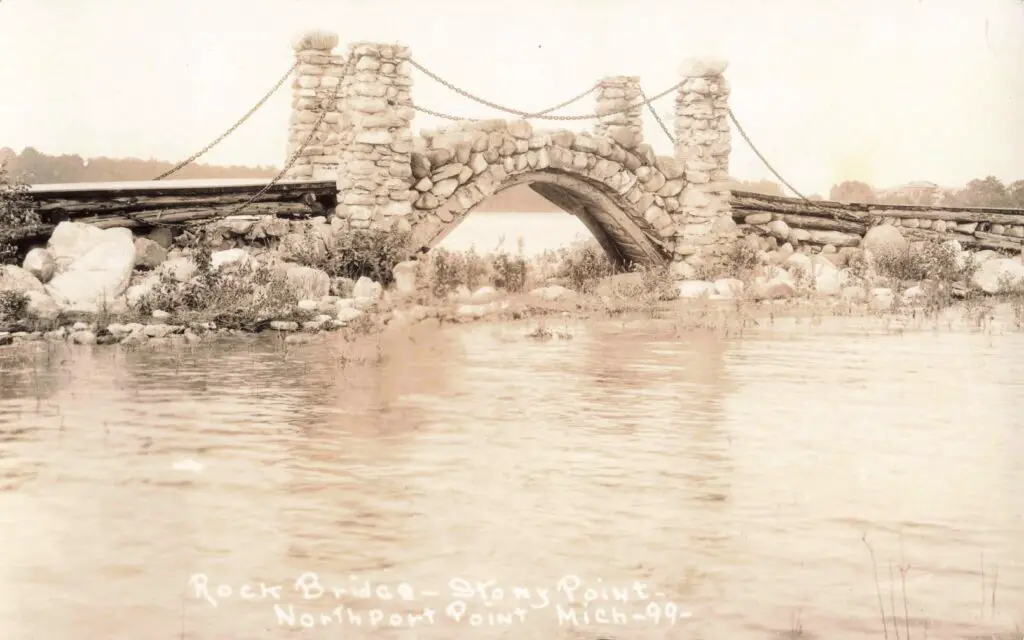
Boats docked nearby, and a small stone and wooden bridge at Stony Point helped visitors reach the farthest tip of the peninsula. These areas brought seasonal cash and kept tourism alive between harvests.
A Community in Motion
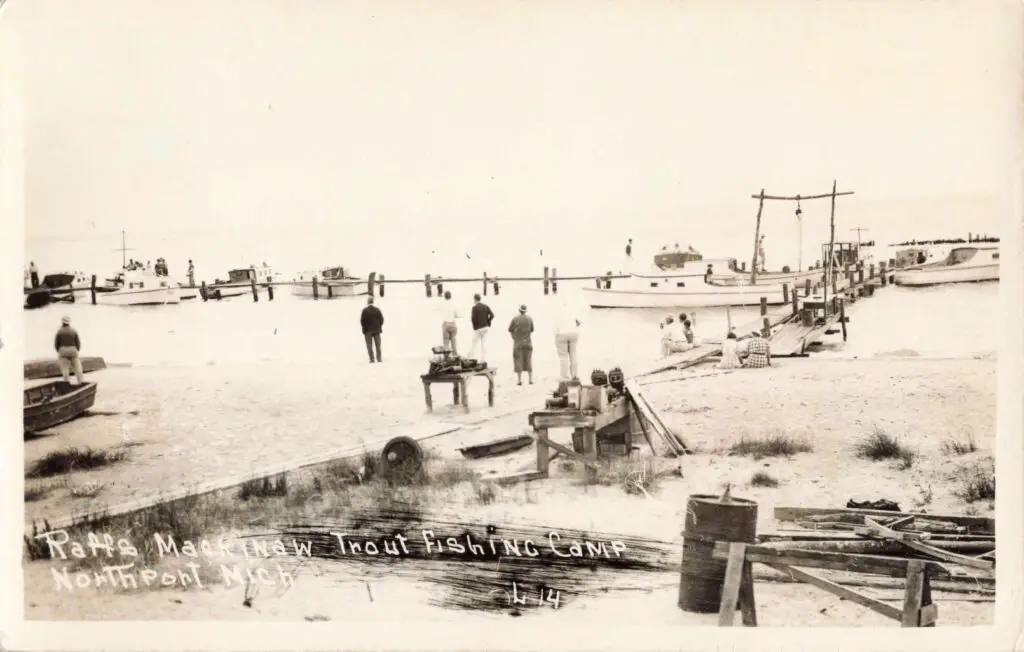
Each image tells the same truth. Northport was a working town. It shipped, processed, and hosted. Its docks smelled of brine and diesel. Its workers stacked crates in the sun and fixed nets in the shade. The train came daily. The church bell rang. Kids played on the docks. Today, much of that motion has slowed, but these photographs hold it still.
Why Northport Michigan History Matters Today
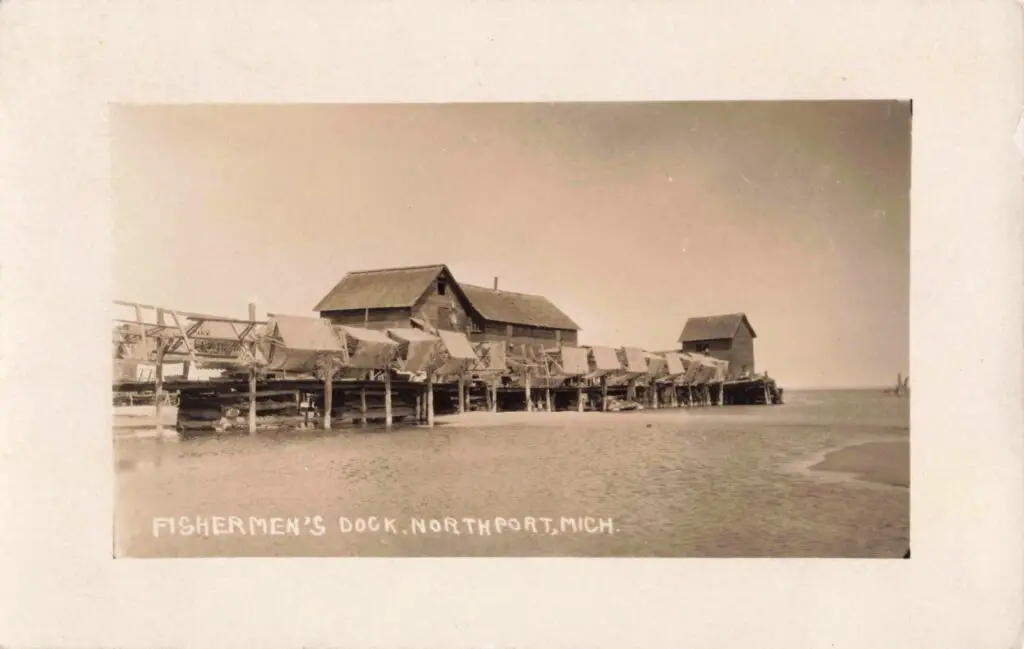
Northport Michigan history is preserved not only in records, but in the everyday scenes captured by these photo postcards. From dockside labor to seasonal cherry harvests, the town’s past is written in steam, crates, and shoreline. These images offer a rare, honest view of a community that shaped northern Michigan’s shoreline economy.
